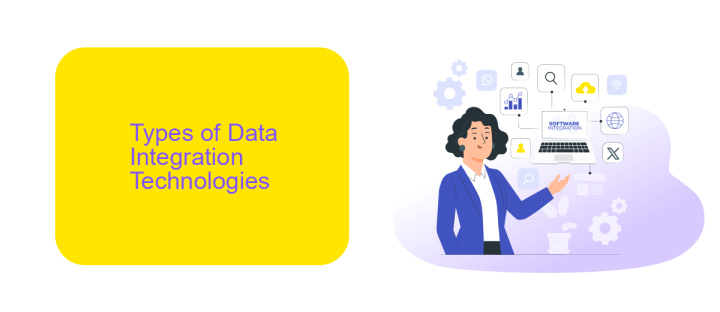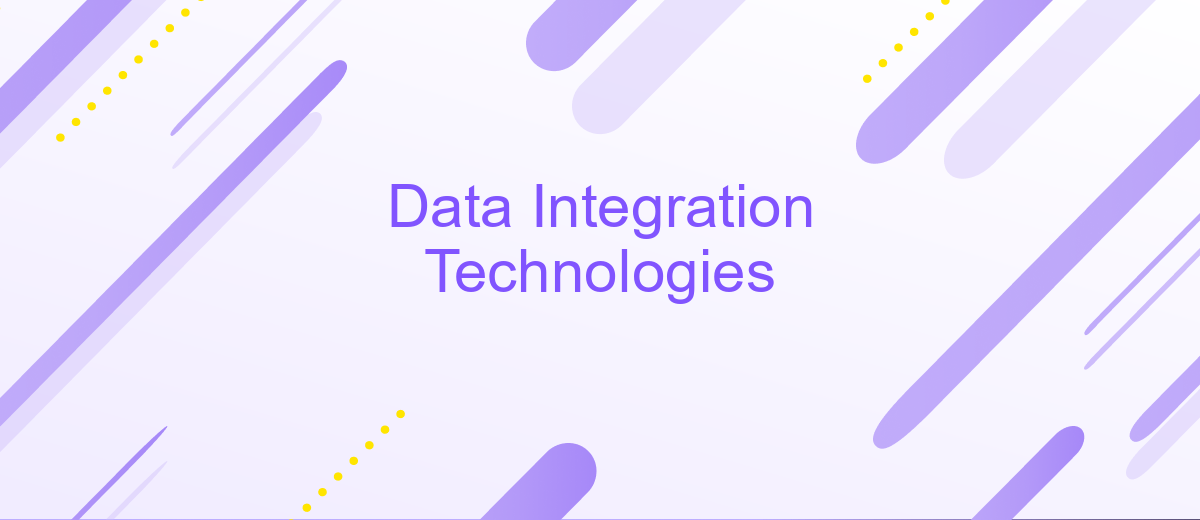Data Integration Technologies
Data integration technologies are essential tools in today's data-driven world, enabling seamless merging of information from diverse sources. These technologies facilitate the consolidation, transformation, and analysis of data, ensuring accuracy and consistency. By leveraging data integration, businesses can gain comprehensive insights, enhance decision-making processes, and maintain a competitive edge in the rapidly evolving digital landscape.
Introduction
Data integration technologies play a crucial role in modern enterprises, enabling seamless data flow between disparate systems and applications. These technologies help organizations consolidate data from various sources, ensuring that information is accurate, consistent, and readily available for decision-making processes. As businesses continue to adopt diverse software solutions, the need for effective data integration becomes increasingly paramount.
- Data consolidation from multiple sources
- Ensuring data accuracy and consistency
- Facilitating real-time data access
- Streamlining business processes
One of the key players in the field of data integration is ApiX-Drive, a service designed to simplify the integration process. ApiX-Drive allows users to connect various applications and automate data transfers without requiring extensive technical knowledge. By leveraging such tools, businesses can enhance their operational efficiency and focus on strategic initiatives rather than manual data management tasks.
Types of Data Integration Technologies

Data integration technologies encompass various methods and tools designed to consolidate data from disparate sources into a unified view. One common approach is ETL (Extract, Transform, Load), which involves extracting data from multiple sources, transforming it into a consistent format, and loading it into a data warehouse. Another method is data virtualization, which allows users to access and query data in real-time without the need for physical storage. This technique provides a virtual layer that integrates data from different sources, offering a unified view without data movement.
API-based integration is another popular technology, enabling seamless data exchange between different systems through APIs. Services like ApiX-Drive facilitate this by offering a platform to connect various applications and automate data workflows. ApiX-Drive simplifies the integration process, allowing businesses to set up data transfers quickly and efficiently without extensive coding. Additionally, cloud-based data integration platforms provide scalable solutions for managing large volumes of data, supporting real-time analytics, and ensuring data consistency across multiple environments.
Benefits of Data Integration

Data integration technologies offer numerous advantages for businesses, streamlining processes and enhancing decision-making. By consolidating data from various sources, organizations can achieve a more comprehensive view of their operations, leading to better insights and improved efficiency.
- Enhanced Data Quality: Integrating data from multiple sources helps in identifying and eliminating inconsistencies, resulting in higher data accuracy.
- Improved Decision-Making: Access to unified data allows for more informed and timely decisions, driving business growth.
- Operational Efficiency: Automating data integration processes reduces manual effort, saving time and resources.
- Cost Savings: Efficient data management can lead to significant cost reductions by minimizing data redundancy and storage needs.
- Scalability: Modern data integration solutions can easily scale to accommodate growing data volumes and business needs.
Services like ApiX-Drive simplify the integration process by providing user-friendly tools to connect various applications and data sources. This not only accelerates the integration setup but also ensures seamless data flow, empowering businesses to focus on their core activities without worrying about data management complexities.
Challenges of Data Integration



Conclusion
Data integration technologies play a crucial role in today's data-driven world, enabling seamless connectivity and data flow between diverse systems. These technologies help organizations achieve greater efficiency, accuracy, and agility by automating data exchange processes. As businesses continue to rely heavily on data for decision-making, the importance of robust data integration solutions cannot be overstated.
Tools like ApiX-Drive are instrumental in simplifying the integration process, offering user-friendly interfaces and powerful features to connect various applications effortlessly. By leveraging such services, organizations can minimize manual efforts, reduce errors, and ensure real-time data synchronization. As the landscape of data integration continues to evolve, staying updated with the latest technologies and solutions will be essential for businesses aiming to maintain a competitive edge and drive innovation.
FAQ
What is data integration?
Why is data integration important for businesses?
What are the common challenges in data integration?
How can businesses automate their data integration processes?
What should be considered when choosing a data integration tool?
Apix-Drive is a universal tool that will quickly streamline any workflow, freeing you from routine and possible financial losses. Try ApiX-Drive in action and see how useful it is for you personally. In the meantime, when you are setting up connections between systems, think about where you are investing your free time, because now you will have much more of it.

